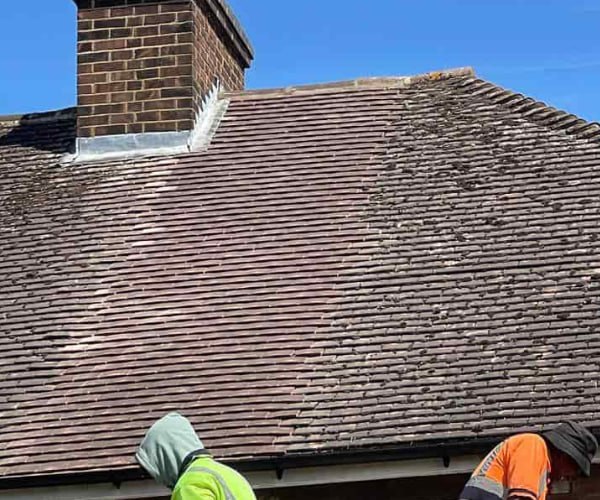What Causes Roof Tiles to Slip? And How to Fix It
Slipped roof tiles are a common issue for many homeowners and property managers. While a single displaced tile might seem harmless, it can quickly lead to water ingress, insulation damage, or even structural problems if left unattended. At BMT Roofing Wollaston, we regularly assist clients across Wollaston, Northamptonshire with identifying and resolving tile slip issues before they become costly repairs. Below, we explore what causes roof tiles to slip and how to deal with them effectively.
Common Causes of Slipped Roof Tiles
Understanding the root causes of tile displacement is essential for both repair and prevention.
1. Nail or Clip Failure
- Most roof tiles are secured with nails or clips. Over time, these fixings can corrode, loosen or fail altogether due to moisture, movement, or age.
- Once the fixings degrade, the tile is no longer held in place and can slip, especially during windy or rainy conditions.
2. Ageing Roofing Materials
- Roofing materials, like any other building component, degrade over time. As the underfelt deteriorates and fixings weaken, tiles can become more susceptible to slipping.
- Older roofs (20+ years) are more prone to recurring slip issues and may require more than just a quick fix.
3. Storm or Wind Damage
- High winds can dislodge tiles or loosen them just enough that they eventually slip down.
- Debris thrown against the roof during a storm can also knock tiles out of place.
4. Poor Installation
- If the original roof installation was rushed or not carried out to industry standards, tiles may have been inadequately fixed.
- Inconsistent nail placement, improper overlapping, or missing fixings can all lead to slipping tiles over time.
5. Movement in the Roof Structure
- Subtle structural shifts, often due to thermal expansion, settling foundations, or timber movement, can disrupt tile alignment.
- This movement places extra pressure on fixings and can loosen tiles from their original positions.
6. Inadequate Roof Ventilation
- Poor ventilation leads to increased moisture in the loft space, which can corrode nails and battens.
- Eventually, this deterioration affects the structural integrity of the roof covering.
How to Fix Slipped Roof Tiles
Slipped tiles should always be addressed promptly to avoid further roof damage. Here are the steps typically involved in the repair process.
Step 1: Inspection
- A thorough inspection by a qualified roofer is essential to identify the cause of the tile movement and assess the overall roof condition.
- At BMT Roofing Wollaston, we offer detailed roof checks across Wollaston, Northamptonshire to determine the right course of action.
Step 2: Reposition or Replace the Tile
- If the tile is intact and undamaged, it can often be repositioned and securely re-fixed.
- If broken, the tile will need to be replaced with a matching type to maintain the roof’s performance and appearance.
Step 3: Check and Replace Fixings
- The underlying nails or clips may need replacing, especially if corrosion is present.
- In some cases, roofing adhesive or mechanical fixings are used for extra security.
Step 4: Inspect the Roof Structure
- It’s important to check the battens, underlay, and surrounding tiles to ensure no further weaknesses exist.
- Where structural movement or timber decay is found, additional repairs may be necessary.
Preventing Future Tile Slips
Regular maintenance is the most effective way to avoid tile slippage and prolong the life of your roof.
Tips for Preventative Roof Care:
- Book annual inspections, particularly after storms or heavy winter weather
- Keep your gutters clear to avoid water buildup under tiles
- Replace missing mortar on ridges or verges promptly
- Address loft ventilation issues to prevent internal moisture damage
Conclusion
Slipped roof tiles are more than a cosmetic problem – they can lead to serious damage if not repaired in good time. Whether caused by ageing fixings, poor installation or weather damage, the best course of action is to have them professionally assessed and repaired. At BMT Roofing Wollaston, we help homeowners and businesses in Wollaston, Northamptonshire with reliable, long-lasting roofing solutions.
If you’ve noticed a slipped tile or have concerns about your roof’s condition, get in touch with BMT Roofing Wollaston to arrange a roof inspection and professional repair service.
Call us on: 01933 823 289
Click here to find out more about BMT Roofing Wollaston
Click here to complete our contact form and see how we can help with your roofing needs.

